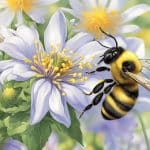Types Of Eucalyptus
Eucalyptus is a diverse genus of flowering trees and shrubs that is native to Australia. With over 700 species, eucalyptus trees are known for their aromatic leaves, attractive flowers, and distinctive bark. They are also valued for their medicinal properties, timber, and essential oils.
Classification and Species: Eucalyptus trees belong to the family Myrtaceae and the genus Eucalyptus. They are classified into three main groups: mallee, marlock, and mallet. Mallee eucalyptus trees are multi-stemmed and grow up to 10 meters tall. Marlock eucalyptus trees are small, bushy trees that grow up to 5 meters tall. Mallet eucalyptus trees are single-stemmed and grow up to 30 meters tall.
Physical Characteristics: Eucalyptus trees have simple, lance-shaped leaves that are arranged alternately on the stem. They have showy flowers that are usually white, yellow, pink, or red in color. Eucalyptus bark is often rough, fibrous, and peels away in long strips. Some species have smooth bark that is colored in shades of blue, gray, or green.
Key Takeaways
- Eucalyptus is a diverse genus of flowering trees and shrubs that is native to Australia.
- Eucalyptus trees are classified into three main groups: mallee, marlock, and mallet.
- Eucalyptus trees have simple, lance-shaped leaves, showy flowers, and distinctive bark.
Classification and Species

Myrtaceae Family
Eucalyptus trees belong to the Myrtaceae family, which includes about 144 genera and over 5,000 species of flowering plants. The family is widely distributed across the world, but most of the species are found in Australia. The Myrtaceae family is characterized by the presence of oil glands in the leaves, flowers, and fruits.
Diversity of Species
Eucalyptus is a large genus of over 700 species of trees and shrubs. The species vary in size, shape, and color, with some growing up to 100 meters tall. The leaves of eucalyptus trees are typically lance-shaped, and many species have distinctive juvenile and adult leaves. The flowers of eucalyptus trees are usually white, cream, or yellow, and they are arranged in clusters.
Identifying Characteristics
Eucalyptus trees are known for their distinctive bark, which can be smooth, rough, or stringy depending on the species. The bark of some species is also colored, with shades of red, brown, or gray. The leaves of eucalyptus trees are rich in oils, which give them their characteristic aroma. The oils are also used in various industries, including perfumery, pharmaceuticals, and cosmetics.
Some of the most common eucalyptus species include Eucalyptus globulus, Eucalyptus camaldulensis, and Eucalyptus grandis. Corymbia is a genus closely related to eucalyptus and includes about 113 species. Identifying eucalyptus species can be challenging, but there are tools available, such as the PlantSnap app, which can help with identification.
In conclusion, eucalyptus trees are a diverse group of plants that belong to the Myrtaceae family. The trees are known for their distinctive bark, leaves, and flowers, and they have a wide range of uses. Identifying eucalyptus species can be challenging, but with the right tools and knowledge, it can be done.
Physical Characteristics
Eucalyptus trees are known for their unique physical characteristics, which vary among different species. This section will discuss the leaf morphology, bark textures, and flower variations of eucalyptus trees.
Leaf Morphology
Eucalyptus leaves are typically lanceolate or oval in shape, and they can range in size from small to large. Some species have leaves that are glaucous, meaning they have a whitish or bluish-green appearance due to a waxy coating. The leaves of eucalyptus trees contain oil glands, which give them their characteristic aroma.
Bark Textures
The bark of eucalyptus trees is one of their most distinctive features. Some species have smooth bark, while others have bark that is fibrous, hard, or stringy. The texture of the bark can vary depending on the age of the tree and the species.
Flower Variations
Eucalyptus trees produce cup-like flowers that develop into hard seed heads that resemble nuts. Most species have an abundance of stamens, making them flowering trees, unlike pines. The sepals and petals of the flowers are fused to form a “cap” or operculum over the stamens. The fruit is a woody capsule commonly referred to as a “gumnut.”
In summary, eucalyptus trees exhibit a variety of physical characteristics that make them unique. Their leaves can be lanceolate or oval in shape, and some species have glaucous foliage. The bark of eucalyptus trees can be smooth, fibrous, hard, or stringy, while their flowers develop into hard seed heads that resemble nuts.
Eucalyptus Habitats
Eucalyptus is a genus of over 700 species of flowering trees and shrubs native to Australia and nearby islands. They grow in a variety of habitats ranging from rainforests to deserts, and are known for their distinct, aromatic scent and medicinal properties. In this section, we will explore the Australian origins of eucalyptus, their global distribution, and their preferred climates.
Australian Origins
Eucalyptus is endemic to Australia, where it is a dominant component of the native flora. They are found in a wide range of habitats, from tropical rainforests to arid deserts. Some of the most common species include the mountain gum, rainbow eucalyptus, and mallee eucalyptus.
Global Distribution
Eucalyptus has been introduced to many parts of the world, including Europe, Africa, Asia, and the Americas. They are often planted for their fast growth and commercial value, particularly for the production of paper and timber. However, they have also become invasive in some regions, outcompeting native plants and altering ecosystems.
Preferred Climates
Eucalyptus is generally adapted to warm, dry climates, and can tolerate a wide range of soil types and pH levels. They are particularly well-suited to Mediterranean climates, such as those found in California, Chile, and South Africa. However, they can also grow in tropical and subtropical regions, as well as temperate zones with mild winters.
In conclusion, eucalyptus is a diverse and adaptable genus of trees and shrubs that can thrive in a wide range of habitats. While they are native to Australia, they have been introduced to many parts of the world and are valued for their commercial and medicinal uses. However, their invasive potential should be carefully monitored to prevent negative impacts on native ecosystems.
Ecological Impact and Uses
Eucalyptus in Ecosystems
Eucalyptus trees have both positive and negative ecological impacts. While they are fast-growing and can provide shade, shelter, and habitat for wildlife, they are also known to be invasive in some regions and can outcompete native vegetation. In addition, eucalyptus trees have been found to be highly flammable, which can increase the risk of wildfires in areas where they are present.
Despite these concerns, eucalyptus trees have been used for reforestation and afforestation projects in many parts of the world. They are often planted in areas where the soil is poor or degraded, as they are known to be able to grow in a wide range of soil types. In addition, eucalyptus trees are often used in agroforestry systems, where they can provide shade for crops and help to prevent soil erosion.
Commercial and Ornamental Use
Eucalyptus trees are widely used for commercial purposes, including the production of timber, pulp, and paper. They are also commonly used in landscaping and as ornamental plants, due to their attractive foliage and fast growth rate. However, it is important to note that some species of eucalyptus are considered invasive in certain regions, and can have negative impacts on native ecosystems.
Eucalyptus Oil and Derivatives
Eucalyptus oil is a popular essential oil that is derived from the leaves of the eucalyptus tree. It is commonly used in aromatherapy, as well as in the production of pharmaceuticals, cosmetics, and cleaning products. Eucalyptus oil is known for its antiseptic and anti-inflammatory properties, and is often used to treat respiratory ailments such as asthma and bronchitis.
In addition to eucalyptus oil, other derivatives of the eucalyptus tree are also used in various industries. For example, eucalyptus leaves are sometimes used to produce natural dyes, while eucalyptus wood is used to make furniture, flooring, and other wood products.
Overall, eucalyptus trees have a complex ecological and economic impact, and their use should be carefully considered in order to minimize negative impacts on native ecosystems and maximize their potential benefits.
Cultivation and Care
Planting Guidelines
Eucalyptus is a diverse genus of flowering trees and shrubs, with over 700 species, ranging from small mallee shrubs to tall trees. Most eucalyptus species are fast-growing and evergreen, making them great for landscaping purposes. When planting eucalyptus, it is important to choose a location that receives full sun and has well-draining soil. Eucalyptus is drought tolerant and cold-hardy, making it a great choice for regions with dry or cold climates.
There are three main types of eucalyptus: mallee, mallet, and marlock. Mallee eucalyptus species have multiple stems arising from an underground lignotuber, while mallet eucalyptus species have a single, straight stem. Marlock eucalyptus species have a dense, rounded growth habit. When choosing a species of eucalyptus to plant, it is important to consider its growth habit and size, as well as its suitability for the local climate.
Growth Factors
Eucalyptus requires minimal maintenance once established, but proper care during the establishment period is important. When planting eucalyptus, it is important to water it regularly until it is established. After that, eucalyptus is drought tolerant and requires minimal watering. Eucalyptus grows best in full sun and well-draining soil. It is important to avoid planting eucalyptus in areas with poor drainage, as this can lead to root rot.
Eucalyptus is a fast-growing tree, with some species growing up to 6 feet per year. However, the growth rate of eucalyptus can be affected by a number of factors, including soil quality, water availability, and temperature. Eucalyptus is also known for its allelopathic effects, which can inhibit the growth of other plants in the surrounding area.
Maintenance and Pruning
Eucalyptus requires minimal maintenance once established. Pruning is generally not necessary, but can be done to maintain the desired shape or to remove damaged or diseased wood. When pruning eucalyptus, it is important to use clean, sharp tools to avoid damaging the tree. Eucalyptus can also be susceptible to pests and diseases, such as eucalyptus gall wasp and eucalyptus leaf spot. Regular monitoring and treatment can help prevent these issues from becoming a problem.
In summary, eucalyptus is a fast-growing, evergreen tree that is drought tolerant and cold-hardy. When planting eucalyptus, it is important to choose a location that receives full sun and has well-draining soil. Eucalyptus requires minimal maintenance once established, but proper care during the establishment period is important. Eucalyptus is also known for its allelopathic effects, which can inhibit the growth of other plants in the surrounding area.






